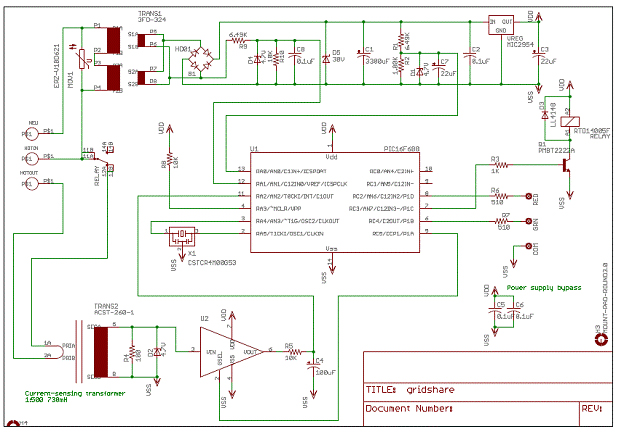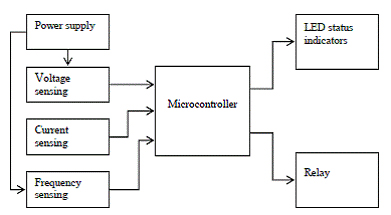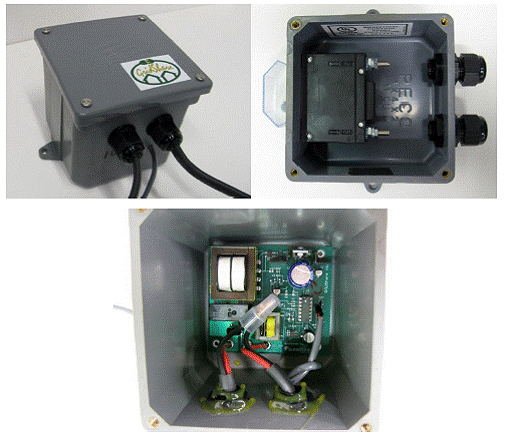Grantee Research Project Results
2011 Progress Report: Smoothing the Peaks: GridShare Smart Grid Technology to Reduce Brownouts on Micro-hydroelectric Mini-grids in Bhutan
EPA Grant Number: SU834749Title: Smoothing the Peaks: GridShare Smart Grid Technology to Reduce Brownouts on Micro-hydroelectric Mini-grids in Bhutan
Investigators: Jacobson, Arne E. , Lehman, Peter
Current Investigators: Jacobson, Arne E. , Lehman, Peter , Cashman, Eileen , Palmer, Kyle , Chase, Nathan , Robinson, James , Quetchenbach, Tom , Harper, Meg , Mielke, Kirstin
Institution: Humboldt State University
EPA Project Officer: Page, Angela
Phase: II
Project Period: May 19, 2010 through August 18, 2012
Project Period Covered by this Report: August 15, 2010 through August 14,2011
Project Amount: $74,899
RFA: P3 Awards: A National Student Design Competition for Sustainability Focusing on People, Prosperity and the Planet - Phase 2 (2010) Recipients Lists
Research Category: Pollution Prevention/Sustainable Development , P3 Awards , P3 Challenge Area - Air Quality , Sustainable and Healthy Communities
Objective:

Figure 1. Voltage and current on one phase of load output at the powerhouse in Rukubji, Bhutan on July 19th, 2010.
The periodic increases in current and corresponding decreases in voltage represnt the morning and evening brownouts
that are characteristic of micro-hydrielectric mini-grids in Bhutan and elsewhere around the world (L). Typical
cooking appliances in Rukubji, Bhutan include water boilers, rice cookers, curry cookers and LPG stoves (R).1

Figure 2. Chhimi Dorji asks students "where their electricity comes from?" and describes microhydro
system (L). Meg Harper and Nathan Chase help students understand the concept of load shifting (R).

Figure 3. The main village of Rukubji is located in the center of Bhutan in the Himalayan Asia (L). Kyle Palmer
and Chhimi Dorji install a Gridshare on the outside of the resident Dorji Lham's house (R)
Progress Summary:

Figure 4. Installation diagram for Gridshares (top). BPC electrician, Sangay Phuentsho, installs a Gridshare
and breaker box (bottom left). LED box with instructional sign installed below (bottom right).
| Lifecycle cost | Levalized cost of increased capacity ($/kWh) | LEvelized cost of avoided CO2e ($/tCO2e) | |
|---|---|---|---|
| Hydro expansion (89 kW) | $830,329 | $0.379 | $132.97 |
| Batteries | $450,037 | $0.228 | $72.07 |
| Diesel Generator | $268,423 | $0.123 | $45.32 |
| Grid connection | $199,518 | $0.032 | $6.95 |
| GridShare | $9,225 | $0.005 | $1.64 |
Table A2. GridShare parts list with prices as of April 2011 (Quetchenbach, 2011)
| Qty | Units | Manufacturer | Manufacturer's Part Number | Description | Unit Price | Price per device |
|---|---|---|---|---|---|---|
| Gridghsare circuit components | ||||||
| 4 | ea | Yageo | CC0603KRX7R988104 | Ceramic capacitor 10.1µf 50V X7R 0603 | $0.0087 | $0.03 |
| 1 | ea | National Semi | LP2954AIT/NOPB | Voltage Regulator 5V 250mA LDO TO-220 | $3.7512 | $3.75 |
| 1 | ea | Tamura | 3FD-234 | Transformer dual pri/dual sec, 12VAC .20A | $2.498 | $2.50 |
| 1 | ea | Assman | AR14-HZL-TT-R | IC socket, machined pins, DIP-14, tin finish | $0.6548 | $0.65 |
| 1 | ea | Panasonic | ECA-1VM332 | Capacitor 3300µF 35V electrolytic | $0.9149 | $0.91 |
| 1 | ea | Corness Dubilier | AVE107M25E16T-F | Capacitor 100µF 25V electrolytic SMD | $0.1595 | $0.16 |
| 2 | ea | Corness Dubilier | AFK226M35C12T-F | Capacitor 22µF 35V electrolutic SMD | $0.2613 | $0.52 |
| 1 | ea | Stackpole | RNCP1206FTD100CRT | Resistor 100 ohm 1/2W 1% 1206 | $0.0271 | $0.03 |
| 2 | ea | Rohm Smi | MCR10EZZPF6491 | Resistor 6.49K ohm 1/8W 1% 0805 | $0.02205 | $0.04 |
| 1 | ea | Rohm Semi | MCR10EZPF1001 | Resistor 1.00K ohm 1/8W 1% 0805 | $0.0268 | $0.03 |
| 3 | ea | Stackpole | RMCF0306JTK100 | Resistor 1K ohm 1/10W 5% 0603 | $0.0052 | $0.02 |
| 1 | ea | Stackpole | RMCF0603JT10K0 | Resistor 10K ohm 1/10W 5% 0603 | $0.0052 | $0.01 |
| 1 | ea | NXP Semi | PMBT2222A,215 | Transistor NPN 600 mA 40V SOT23 | $0.11 | $0.11 |
| 1 | ea | Diodes Inc | HD01-T | Rectifier, bridge, gen. purpose, 100V 0.8A | $0.273 | $0.27 |
| 1 | ea | TE Connectivity | TRD1400SF | Relay, SPD 16A, 5VDC | $1.455 | $1.46 |
| 3 | ea | NXP Semi | BZX84-C4V7,215 | Diode, zener, 4.7V 250mW SOT23 | $0.06842 | $0.20 |
| 1 | ea | Fairchild | LL4148 | Diode, small signal, gen. purpose, SOD80 | $0.05 | $0.05 |
| 1 | ea | Bourns | SMBJ3A | Diode, TVS, 30V 600W unidirectional 5% SMB | $0.159 | $0.16 |
| 1 | ea | Panasonic | ERZ-V10D621 | Surge Absorber 10mm 620V 2500A ZNR | $0.2956 | $0.30 |
| 1 | ea | Microchip | MCP6G01-E/SN | Selectable-gain amplifier 1.8V 1CH 8SOIC | $0.36 | $0.36 |
| 1 | ea | Zettler Magnetics | SCST-260-1 | Current transformer 30A 530uOhm 60mH | $0.96 | $0.96 |
| 1 | ea | Avid Thermalloy | 507002B00000G | Heatsink for TO-220 | $0.2174 | $0.22 |
| 1 | ea | Microchip | PIC16f688-I/P | PIC flash microcontroller 14-DIP 4Kword | $1.32 | $0.32 |
| 2 | ea | Stackpole | RMCF0603JT510R | Resistor 510 OHM 1/10W 5% 0603 | $0.0052 | $0.01 |
| Subtotal | $14.07 | |||||
| GridShare enclosure and wiring | ||||||
| 1 | ea | IDEAL | 20065 | Open end wire crimp ("Splice-Cap") | $0.0146 | $0.10 |
| 1 | ea | IDEAL | 2007 | Insulator for Splice-Cap | $0.18414 | $0.18 |
| 6 | ft | Various | 12AWG/2 cond. Tray cable (Tupe TC)5 | $0.445 | $2.67 | |
| 1.5 | ft | Coleman Cable | 95218 | 18AWG/3 cond. Stranded shielded cable | $0.2859 | $0.43 |
| 1 | ea | PECO | VJB-444 | PVC junction box 4"x4"x4" | $11.42 | $11.42 |
| 2 | ea | Cable Glands Direct | BPT-38 | NPT-3/8" cable gland | $0.54 | $1.08 |
| Subtotal | $15.89 | |||||
| Breaker box components | ||||||
| 1 | ea | PECO | VJB-442 | PVC junction box 4"x4"x4" | $6.79 | $6.79 |
| 1 | ea | TE Connectivity | W91-X112-20 | Circuit breaker, hydraulic-magnetic 20A | $12.27 | $12.27 |
| 1 | ea | APM Hexseal | HE1015 | Dealing boot for circuit breaker | $12.528 | $13.53 |
| 2 | ea | Cable Glands Direct | NPT-38 | NPT-3/8" cable gland | $0.54 | $1.08 |
| Subtotal | $33.47 | |||||
| LED box components | ||||||
| 1 | ea | Lumex | SSL-LX30521ID | LED 3MM red | $0.236 | $0.24 |
| 1 | ea | Lumex | SSL-LX3052GD | LED 3MM green | $0.192 | $0.19 |
| 1 | ea | Lumex | SSH-LX3050 | LED holder, smap-in plastic panel-mount | $0.11252 | $0.11 |
| 1 | ft | Coleman Cable Inc | 96218 | 18AWG/3 cond. Stranded shilded cable | $0.2859 | $0.29 |
| 1 | ea | All Electronics | MB-96 | Plastic enclosure | $1.35 | $1.35 |
| Subtotal | $2.18 | |||||
| Services | ||||||
| Suntone Circuits | PCB fabrication (1 week build time)6 | $739.75 | $6.16 | |||
| Screaming Circuits | PCB assembly (5-day turnaround) | $2,568 | $21.40 | |||
| Subtotal | $27.56 | |||||
| Discounts | ||||||
| Suntone Circuits | Sponsorship | -$500 | 4.17 | |||
| Screaming Circits | University discount | -$256.80 | -$2.14 | |||
| Screaming Circuits | First-time customer discount | -$256.80 | -$2.14 | |||
| Screaming Circuits | Sponsorship | -$2000.00 | -$16.67 | |||
| Industrial Electric | Discount on enclosures (4"x4"x4") | -$537.60 | -$4.48 | |||
| Industrial Electric | Discount on enclosures (4"x4"x2") | -$301.20 | -$2.51 | |||
| Industrial Electric | Donation | -$600.00 | -$5.00 | |||
| Subtotal | -$37.10 | |||||
| Total before discounts | $93.37 | |||||
| Total after discounts | $56.26 | |||||

Figure A1. GridShare circuit diagram (Quetchenback, 2011)

Figure A2. GridShare functional block diagram (Quetchenback, 2011)

Figure A3. The 4"x4"x4" GridShare enclosure protects the GridShare circuit board,
upstream of each GridShare.

Figure A4. Bi-lingual informational brochure distributed to every household and
interested parties.

Figure A5. Double-sided bi-lingual instructional sheet installed below each LED box
Future Activities:
| PHASE | DATES | PEOPLE | TASK4 | |
|---|---|---|---|---|
| 1 | Gridshare Refinement & Assembly | May-May 2010 | HSU: 3 undergrad, 3 grad students, faculty leaders (A. Jacobson, P. Lehman), adviser K. Palmer | Built on work from Phae 1 to refine GridShare and assemble prototypes to take on the initial field visit. Further refined GridShare after feebback from assembled and tested 120 devices for installaation in June 2011. |
| Initial Field Visit | Summer 2010 | HSU: 2 grad students, 1 undergraduate BPC: 4 employees Rukubji Villagers | Data collection: Daily votage and current measurements, individual testing and demonstration of prototype GridShare device. Education: Informed the villagers of the details of our field study and guidelines for their participation. Surveyed all residents regarding effects of brownouts and their interest in GridShare devices. Installation Planning: Planned for the installation of GridShare devices in June 2011. Set up a system to monitor electric system over two-year period. | |
| 2 | Installation | Summer 2011 | HSU: 2 grad students, 1 alumni, 1 PI, 1 adviser BPC: 4 employees DOE: C. Dorji Rukunji Villagers | Installed GridShare devices in 82 household and 1 restaurant. Held community meetings and met with each household to explain functioning of GridShare. Conducted short survey to assess satisfaction and behavior change. Provided installation and monitoring training to 4 BPC employees. |
| 3 | Monitoring | June 2011 - January 2012 | HSU: 1 alumni living in country and 1 grad student BPC: 1 emplyee DOE: C. Dorji | Monitor the performance of GridShare devices. BPC employees will email the HSU team with feedback from users and data from data loggers. |
| 4 | Final Assessment | January 2012 | HSU: 1 grad student, 1 alumni IPI BPC: 3 emplyees DOE: C. Dorji Rukubji Villagers | Survey all GridShare users. Host a community meeting discussing the outcome wiht the villagers and the BPC. HSU team will analyze interview data and draft a report on the Installation. Monitoring and Evaluation. |
| 5 | Decommission/Commercialization | Winter/Spring 2012 | HSU: 1 grad student BPC: 2 employees DOE: C. Dorji Rukubji Villagers | Decommission the pilot project, if appropriate. HSU team will initiate commercialization plan, if appropriate. |
References:
Journal Articles on this Report : 1 Displayed | Download in RIS Format
| Other project views: | All 4 publications | 1 publications in selected types | All 1 journal articles |
|---|
| Type | Citation | ||
|---|---|---|---|
|
|
Quetchenbach T, Harper M, Ribinson IV J, Hervin K, Chase N, Dorji C, Jacobson A. The Grid Share Solution:a smart grid approach to improve service provision on a renewable energy mini-grid in Bhutan. Environmental Research Letters 2013;8(014018). |
SU834749 (2011) SU834749 (Final) |
Exit |
Progress and Final Reports:
Original AbstractP3 Phase I:
Smoothing the Peaks: Smart Outlets to Reduce Brownouts on Micro-hydroelectric Minigrids in Bhutan | Final ReportThe perspectives, information and conclusions conveyed in research project abstracts, progress reports, final reports, journal abstracts and journal publications convey the viewpoints of the principal investigator and may not represent the views and policies of ORD and EPA. Conclusions drawn by the principal investigators have not been reviewed by the Agency.
